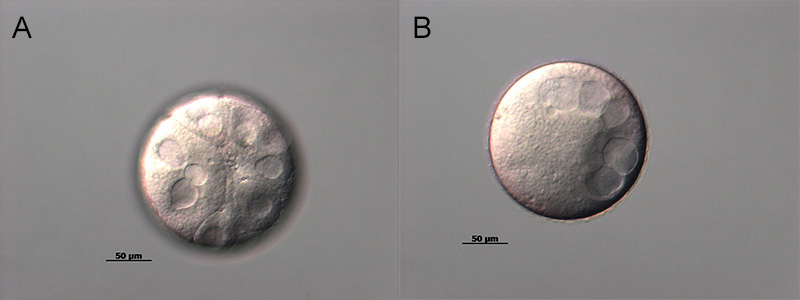 Researcher
Researcher
Integrative Marine Ecology Department
Tel. +39 081 5833280
e-mail: ylenia.carotenuto(at)szn.it
Skype: carotylene
Research interests
Plankton chemical ecology, molecular ecology, diatom-copepod interactions, copepod reproduction and development, Next Generation Sequencing.
My research interests focus on phytoplankton-zooplankton interactions in marine systems and their role in ecosystem functioning. In particular, I investigate the impact of microalgae biodiversity in terms of species, biological traits and production of info-chemicals (toxins and oxylipins), on grazing, reproduction, larval development and gene expression of copepods, and their role in copepod population dynamics at sea. Oxylipins are secondary metabolites produced by diatoms that induce morphological anomalies and cellular damage in larval stages and adult copepods; they reduce egg hatching success, larval development and, ultimately, recruitment of copepod population at sea.
Production of diatom oxylipins has strong impact on copepod population dynamics at sea; it is, therefore, fundamental, to investigate the ecological role of these secondary metabolites in the marine environment. My research activity involves multiple approaches spanning from measurements of copepod life-history parameters (i.e. ingestion rates, egg production and viability, larval survivorship), in laboratory-controlled conditions and in situ (Gulf of Naples, Adriatic Sea), to quantitative gene expression analysis (RT-qPCR) and Next Generation transcriptome sequencing. Recently, I have started to investigate the impact of anthropogenic stressors (nanoparticles and polluted sediments) on copepods.
Selected Publications
Carotenuto Y, Di Capua I, Di Pinto M, Palumbo F, Percopo I, Uttieri M, Miralto A, Mazzocchi MG, Ianora A. 2023. Twenty-year trends of Centropages typicus (Copepoda, Calanoida) reproduction, feeding, population abundance and structure in the Gulf of Naples (Western Mediterranean Sea). Marine Ecology, e12739. doi.org/10.1111/maec.12739
Roncalli, V., Uttieri, M., Capua, I. D., Lauritano, C., Carotenuto, Y. (2022). Chemosensory-Related Genes in Marine Copepods. Marine Drugs, 20(11), 681.
Russo E, Lauritano C, d’Ippolito G, Fontana A, Sarno D, von Elert E, ianora A, Carotenuto Y, 2020. RNA-Seq and differential gene expression analysis in Temora stylifera copepod females with contrasting non-feeding nauplii survival rates: an environmental transcriptomics study. BMC Genomics, 21:693. doi:10.1186/s12864-020-07112-w
Russo, E., d’Ippolito, G., Fontana, A., Sarno, D., D’Alelio, D., Busseni, G., Ianora, A., von Elert, E., Carotenuto, Y. 2020. Density-dependent oxylipin production in natural diatom communities: possible implications for plankton dynamics. The ISME Journal, 14:164-177. doi.org/10.1038/s41396-019-0518-5.
Carotenuto Y., Vitiello V., Gallo A., Libralato G., Trifuoggi M., Toscanesi M., Lofrano G., Esposito F., Buttino I., 2020. Assessment of the relative sensitivity of the copepods Acartia tonsa and Acartia clausi exposed to sediment-derived elutriates from the Bagnoli-Coroglio industrial area. Marine Environmental Research, 155: 104878. doi.org/10.1016/j.marenvres.2020.104878
Saha, M., Berdalet, E., Carotenuto, Y., Fink, P. Harder, T., John, U., Not, F., Pohnert, G., Potin, P., Selander, E., Vyverman, W., Wichard, T., Zupo, V., Steinke, M. 2019. Using chemical language to shape future marine health. Frontiers in Ecology and the Environment, 17(9):530-537. doi:10.1002/fee.2113.
Ianora, A., Bastianini, M., Carotenuto, Y., Casotti, R., Roncalli, V., Miralto, A., Romano, G., Gerecht, A., Fontana, A., Turner, J.T. 2015. Non-volatile oxylipins can render some diatom blooms more toxic for copepod reproduction. Harmful Algae, 44: 1-7. doi:10.1016/j.hal.2015.02.003.
Carotenuto, Y., Dattolo, E., Lauritano, C., Pisano, F., Sanges, R., Miralto, A., Procaccini, G., and Ianora, A. 2014. Insights into the transcriptome of the marine copepod Calanus helgolandicus feeding on the oxylipin-producing diatom Skeletonema marinoi. Harmful Algae, 31: 153-162. doi:10.1016/j.hal.2013.11.002.
Carotenuto, Y., Wichard, T., Pohnert, G., Lampert, W. 2005. Life history responses of Daphnia pulicaria to diets containing freshwater diatoms: effects of nutritional quality versus polyunsaturated aldehydes. Limnology and Oceanography, 50 (2): 449-454. doi:10.4319/lo.2005.50.2.0449.
Ianora, A., Miralto, A., Poulet, S. A., Carotenuto, Y., Buttino, I., Romano, G., Casotti, R., Pohnert, G., Wichard, T., Colucci-D'Amato, L., Terrazzano, G. and Smetacek, V. 2004. Aldehyde suppression of copepod recruitment in blooms of a ubiquitous planktonic diatom. Nature, 429 (6990): 403-407. doi:10.1038/nature02526.
Websites
Google scholar: https://scholar.google.com/citations?hl=it&user=JJqevnAAAAAJ
Databases and repositories
Assembled transcripts of the copepod Calanus helgolandicus deposited in the Transcriptome Shotgun Assembly (TSA) DDBJ/ENA/GenBank, under the accession GJFL00000000. The version is the first version, GJFL01000000. https://www.ncbi.nlm.nih.gov/nuccore/2052687266
Assembled transcripts of the copepod Temora stylifera deposited in the Transcriptome Shotgun Assembly (TSA) DDBJ/ENA/GenBank, under the accession GJGX00000000. The version is the first version, GJGX01000000; https://www.ncbi.nlm.nih.gov/nuccore/2073957858
Nucleotide sequences: 140 million of Raw Reads of the copepod Temora stylifera deposited in NCBI Sequence Read Archive (SRA), repository accession number PRJNA632714; https://www.ncbi.nlm.nih.gov/sra/PRJNA632714
Nucleotide sequences: 600 million of Raw Reads of the copepod Calanus helgolandicus deposited in NCBI Sequence Read Archive (SRA), repository accession number PRJNA640515; https://www.ncbi.nlm.nih.gov/sra/ PRJNA640515
EST (440) of Calanus helgolandicus deposited in GenBank dbEST Database on 09/01/2014 (GenBank Library Accession Number: LIBEST_028336. GenBank EST Accession numbers: JZ532668-JZ533437).
Nucleotice sequences: 10 sequences of Calanus helgolandicus deposited in GenBank Nucleotide Database on 22/12/2013 (GenBank Accession numbers: KC521529-KC521538).
Foto

Immagini al microscopio ottico di embrioni di copepode Calanus helgolandicus allo stadio di 16 blastomeri. Uova deposte dopo alimentazione delle femmine con dieta di controllo (A, embrione normale) o con diatomee che inducono la formazione di embrioni abnormali (B, embrione con ridotte divisioni cellulari).

Immagine al microscopio confocale a scansione laser di stadio larvale NVI del copepode Temora stylifera, marcato con colorante fluorescente (vista ventrale).










